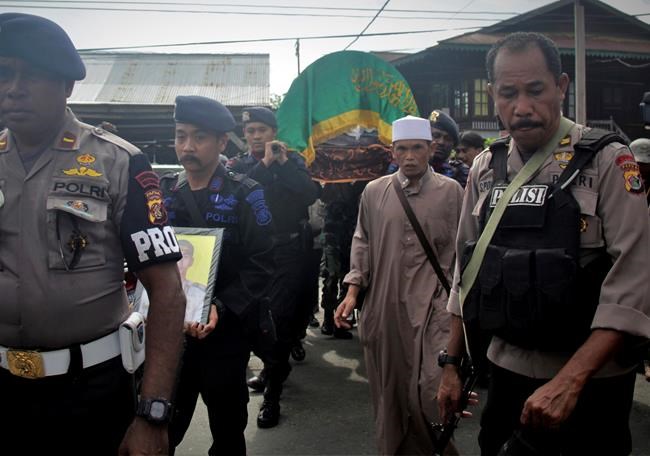Elevate your local knowledge
Sign up for the iNFOnews newsletter today!
Sign up for the iNFOnews newsletter today!
Selecting your primary region ensures you get the stories that matter to you first.

TEMBAGAPURA, Indonesia – Indonesian police said they helped evacuate about 400 people Friday from villages in easternmost Papua that are at the centre of a standoff between security forces and separatists.
About three quarters of those who have left are migrants from other regions and the remainder indigenous Papuan women and children, said Papua police spokesman Ahmad Musthofa Kamal. He said there was gunfire from hills surrounding one village that was hampering the efforts of about 300 police and military personnel to move people.
Tensions in the region near the U.S.-owned Grasberg gold and copper mine have flared in the past month. A series of attacks by suspected separatists have killed two policemen and injured more than half a dozen others.
Members of the National Liberation Army of West Papua last month declared an area near the mine a battlefield with Indonesian security forces and last week stationed armed men in the two main affected villages, Kimbeli and Banti, that are home to about 1,300 people.
Police have made contradictory statements about the status of the villagers, initially calling them hostages and then in other instances saying their movements were not being restricted.
A commander of the armed separatist group, which uses the Indonesian acronym TNP, told The Associated Press last week that villagers were generally free to go about their business but prohibited from entering the area defined as a conflict zone.
Indonesia restricts foreign journalists from reporting in Papua.
National police chief Tito Karniavan on Thursday indicated that security forces were prepared to use force to resolve the standoff.
“We have taken persuasive measures to restore security, asking rebels to restore the peace and freedom of villagers,” he said. “However, if persuasion fails, we will not let the situation worsen, and the state should not be defeated.”
A low-level insurgency for independence has simmered in Papua since it was annexed by Indonesia in the early 1960s. The region, which makes up the western half of the island of New Guinea, was formally incorporated into Indonesia in 1969 following a U.N.-sponsored ballot of tribal leaders that has since been dismissed as a sham.
News from © iNFOnews.ca, . All rights reserved.
This material may not be published, broadcast, rewritten or redistributed.

This site is protected by reCAPTCHA and the Google Privacy Policy and Terms of Service apply.
Want to share your thoughts, add context, or connect with others in your community?
You must be logged in to post a comment.